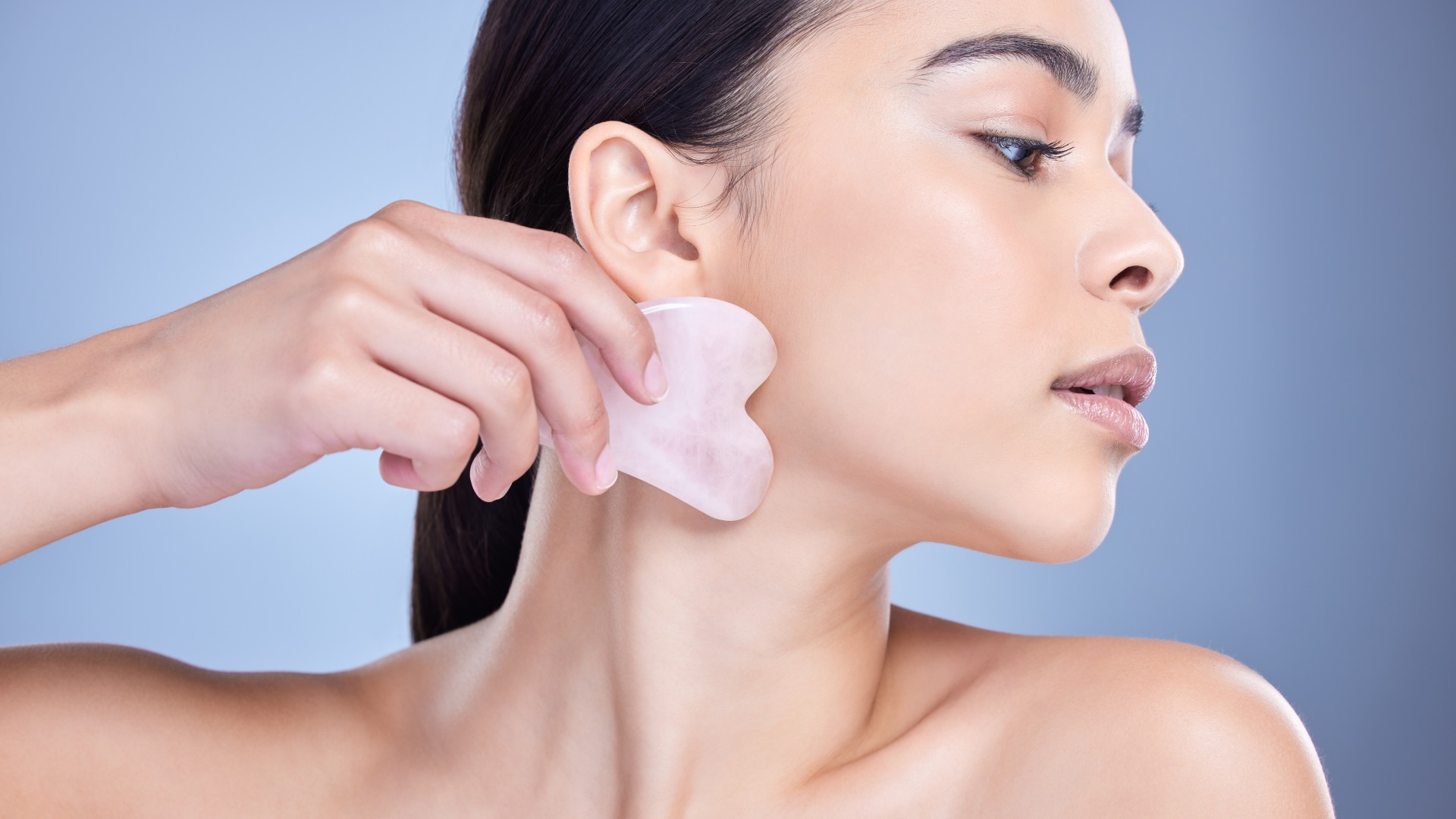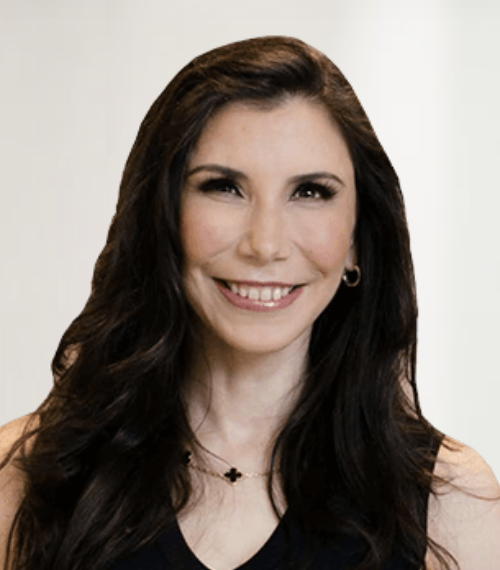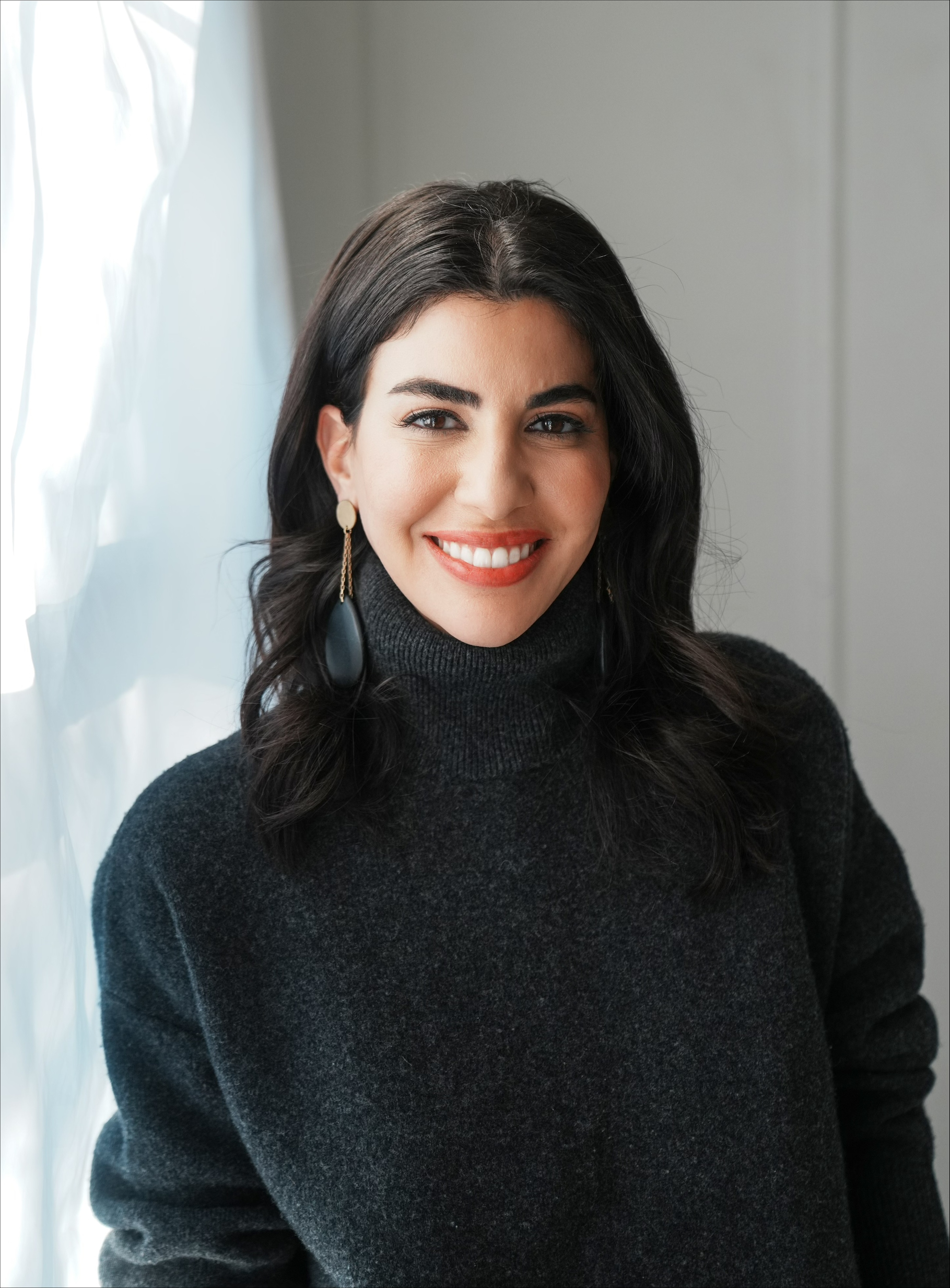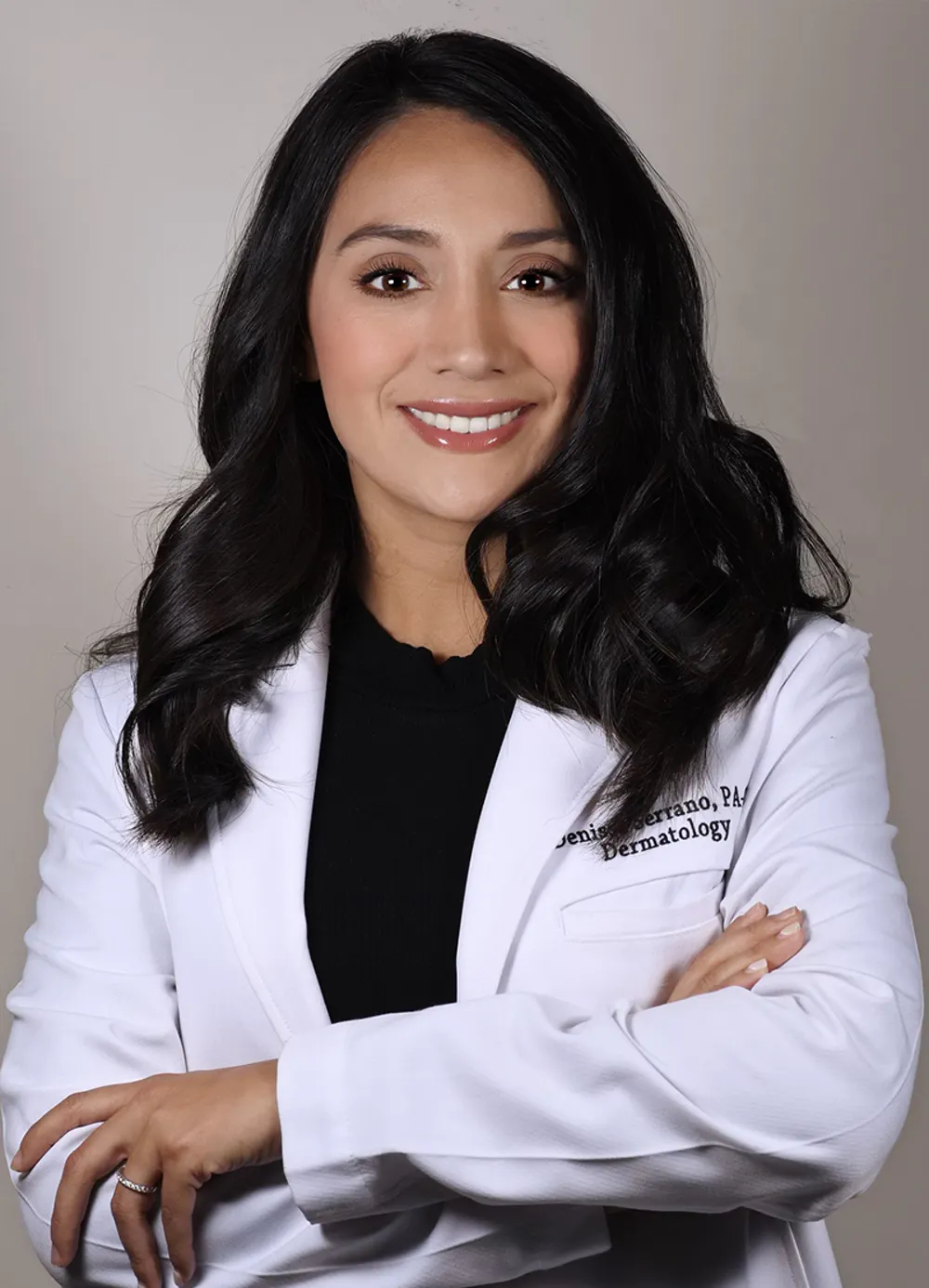Relax, Jowls Aren't Nearly as Scary as They Seem
But if you're considering a jowl-removal treatment, plastic surgeons and skincare experts have advice.


There are lots of wonderful aspects of aging: wisdom, long-lasting friendships, finally settling on a signature scent. One thing that isn't on many people's next-decade vision boards, however? The somewhat inevitable process of developing jowls. If you've found yourself researching how to get rid of jowls—just for future reference—you're not alone.
Board-certified plastic surgeon Dr. Deniz Sarhaddi defines a jowl as "the area of laxity and fullness specifically along the jawline, between the chin and the angle of the jawline." She notes that people often mistake buccal fat pad fullness for jowls—or vice versa. (Buccal fat is actually higher up in the lower cheek.)
Jowls mainly form due to the natural aging process, with signs they're coming starting as early as your late thirties. By your forties and fifties, you'll likely see a greater loss of definition in the jawline, which continues to progress as you get older.
It bears repeating: This is a natural and normal process. "As we age, collagen and elastin production is greatly reduced and skin loses its elasticity and firmness, leading to sagging around the cheeks and jawline," facial plastic surgeon Dr. Jennifer Levine explains. To get anatomical, a weakening of the depressor muscles and ligaments in the lower face, paired with gravity, can pull the skin down and contribute to jowling.
Jowls aren't only formed because of the aging process: Other causes can include genetics, your lifestyle choices, and your anatomy. Many patients have reported sagging jowls following the usage of semaglutide medications as well.
Jowl-havers and future jowl-havers, take note: While this facial transformation is a part of life, it can be treated if you so choose. Keep reading to discover how to get rid of jowls and reduce your chances of developing them in the first place.
What Are Jowls?
Put simply, jowls are the saggy skin around the cheeks and jawline. The biggest cause of jowling is getting older, when skin loses its elasticity and firmness due to a reduction in collagen and elastin. Still, many other factors affect the formation of jowls: Genetics, lifestyle choices like smoking and sun exposure, and weight fluctuations can all play a role. Even your face's underlying anatomy and the position of your airway can make jowls appear more prominently.
Stay In The Know
Get exclusive access to fashion and beauty trends, hot-off-the-press celebrity news, and more.
Getting more technical, Dr. Sarhaddi says that jowls form in part because of anatomy. "Everyone has a ligament just lateral to the chin and in front of the jowl, the mandibular ligament, that doesn't loosen over time. Rather, the tissues behind this ligament loosen and descend over time, creating the jowl," she explains. Patients with a quote-unquote "strong jawline" develop jowls later in life than patients with more delicate jaws. The reason? "The strong bone structure is a bit of a cushion for facial aging and supports that descending tissue a bit better."
So yes, jowling is inevitable—although some faces develop more prominent jowls than others.
How Can I Get Rid of Jowls?
- Injectables: Botox and fillers can both camouflage jowls. "We can place neurotoxin along the platysma muscle, specifically the muscle that wraps around the jawline and neck region," shares Denisse Serrano MS, PA-C, a SkinSpirit Aesthetic Physician’s Assistant. However, it may not be a permanent fix. "I always tell my patients when they have 'graduated' from filler camouflage to surgical correction," Dr. Sarhaddi notes. "Continuing to put filler along the jawline in front of and behind the jowl, as the jowl continues to descend and inflate/get heavier, can give patients a bottom-heavy, square look to the lower face." That can eventually result in an unnatural, puffy look.
- Surgery: Serrano notes that, if your case of jowling is severe, surgery is always the most comprehensive form of correction. While minimally invasive surgery such as microliposuction along the jawline can do the trick on small jowls, a full face or neck lift may be necessary to fully sculpt your jawline.
- At-home prevention: Unfortunately, there's no surefire way to prevent jowls from forming—it's anatomical. You can, however, delay their onset. "Wearing sunscreen daily, using red light therapy devices and medical-grade skincare with peptides and antioxidants, as well as consuming ample Vitamin C and protein for collagen synthesis can help hold off jowling," Dr. Levine recommends.
Professional Treatments for Jowls
A wide variety of treatments are available to reduce the appearance of jowls. Your treatment plan will depend on the cause for jowling, the severity of skin laxity (i.e., loss of firmness and structure), and any other aesthetic goals you have. Remember, it's always important to be goal oriented when considering aesthetic treatments, as opposed to going for procedures willy-nilly.
"Typically, a combination of treatments is used to deliver results that look natural," Dr. Levine says. "Cosmetic fillers also have a lifting effect, while neuromodulators such as Botox can help relax muscles in the lower part of the face and neck, which reduces the pull. Fillers can also be used to give definition to the chin and angle of the mandible as well."
If your jowling is severe, a surgical facelift is often the best option, and you may also have to throw in some liposuction or buccal fat removal.
Got all that? Good. Keep scrolling to dig a little deeper into your options.
Injectables and Fillers
One way to disguise and help prevent jowl formation is injecting Botox into the platysma muscle, a sheet of muscle just under the skin in the neck that extends up onto the lower face. The goal is to get the muscle in the neck to relax up and under the jawline. This is often called a Nefertiti Lift, named for the queen of the 18th Dynasty of Ancient Egypt's sharp jawline.
"Additionally, strategically placed dermal filler that has a high level of gel firmness can be injected. This firm gel can target the jawline in order to mimic bone and create a more defined appearance," Serrano shares. With regular in-office procedures, like quarterly neurotoxin visits and annual dermal filler, Serrano says you can maintain a defined jawline.
Although it can help delay lower face aging by preventing the platysma muscle from pulling down or "bowstringing," Dr. Sarhaddi and Dr. Levine both note that Botox injections do not fully treat jowls. Instead, Botox is a preventative treatment that reduces jowling by relaxing the muscles that pull on the skin.
Face Lifts and Neck Lifts
So, is it time to consider a facelift? While it can certainly eliminate jowls, that's a question to ask your plastic surgeon.
If you and your doctor decide to go the face lift route, here's what you can expect. "In facelift surgery, a key to getting rid of the jowl is to completely disrupt that mandibular ligament, otherwise there will always be a hint of the jowl even if the face is lifted," Dr. Sarhaddi explains. Doctors sometimes choose to add a little volume with fat grafting where the ligament was, making the jawline look "nice and straight and cleaned up."
Facial Liposuction
Micro liposuction just along the jawline is a low-downtime option for treating small jowls, according to Dr. Sarhaddi. It can often be added on during a face or neck lift.
Skin Tightening
If you want to go the non-invasive route, Dr. Levine suggests a treatment like Ultherapy (which utilizes ultrasound energy) or Emface (which uses Synchronized RF and HIFES energies to simultaneously stimulate the production of collagen). Both "lift" tissue to contour the jawline.
Another option? A thread lift, which helps to reposition and tighten tissue, defining the jawline.
At-Home Treatments for Jowls
Sorry, gua sha devotees: There's no simple, over-the-counter treatment for jowls once they've formed.
"People mistake jowls for swelling or lymphedema and often think that gua sha or other at home devices will treat jowls," Dr. Sarhaddi says. "Once a jowl is present, treatment options are camouflage or correction." That's it.
You can, however, take steps to prevent them in the first place.
Serrano notes that you can try microcurrent facial devices that claim to tighten the skin. You can (and should) keep up a quality skincare regimen, especially one that supports collagen and elastin production at home. And remember Dr. Levine's advice: wear sunscreen daily, use your red light therapy mask, and keep consuming Vitamin C and protein.
Meet the Experts

Dr. Jennifer Levine is one of only a few surgeons who are double-board certified by the American Board of Facial Plastic and Reconstructive Surgery, and the American Board of Otolaryngology-head and neck surgery–giving her a unique knowledge of the face and its underlying structures.
Her philosophy is that every individual has the right to results that enhance one’s appearance, not create a new face. To bring harmony to their facial features, Dr. Levine works closely with each patient to develop an individualized treatment plan that focuses on their needs and unique facial features.
She is an expert in the latest invasive and non-invasive anti-aging treatments that help achieve and maintain the look patients have always wanted.

Dr. Sarhaddi earned her undergraduate and medical degrees from The George Washington University in Washington, D.C., where her interest in plastic surgery—and specifically facial aesthetics—emerged. As a medical student, she focused on craniofacial reconstruction and explored this interest through extensive volunteer opportunities and research commitments.
During medical school, Dr. Sarhaddi spent 2 years in a dedicated research fellowship in the Craniofacial Research Laboratory at the University of Michigan in Ann Arbor.
She continues to contribute to the world of academic plastic surgery by writing textbook chapters and manuscripts, serving as a peer reviewer for the Aesthetic Surgery Journal, and as a Contributing Editor in Oculoplastic Surgery for Aesthetic Surgery Journal Open Forum. She is actively involved in The Aesthetic Society, serving on multiple committees. She is an enthusiastic educator, committed to training senior plastic surgery residents at St. Louis University in aesthetic surgery.
Her clinical experience in facial aesthetics had a profound impact on her career choice. It was during this time that Dr. Sarhaddi felt her work, personality, and skill set combined in a way that felt productive and personally fulfilling. After completing an integrated 6-year plastic surgery residency at St. Louis University, she then completed an Aesthetic Surgery Fellowship at Emory University in Atlanta, GA where she refined her skills under the guidance of internationally renowned plastic surgeons.

Denisse M. Serrano is a board-certified Physician Assistant, with a concentration in dermatology and aesthetic medicine. Her expertise includes a variety of skin conditions, injectables, laser devices, and surgical procedures, in addition to her extensive knowledge in the newest cosmetic procedures and leading-edge laser technology. Denisse is known for her honesty and ability to create natural enhancements. She loves being an aesthetic medicine practitioner because it gives her the ability to help people's inner light shine from the inside out.
Denisse is a National Speaker and Trainer for Revance, Galderma and Allergan. She often lectures at national conferences such as the New Wave Dermatology Conference on aesthetic medicine treatments and trends. She is also the founder of a national training company and shares her education and knowledge on the latest injectable treatment approaches, including her signature facial balancing techniques and often flies throughout different parts of the country to teach. Denisse is well known for her full facial rejuvenation treatment approach with injectables.
Outside of work, Denisse loves traveling, the ocean, and spending time with her family. Denisse was also a ballet dancer for 18 years!

Sophia Vilensky is a Freelance Beauty Writer at Marie Claire with a beauty, wellness, and entertainment journalism portfolio that includes contributions to Byrdie, Bravo, Teen Vogue, and Us Weekly. Growing up in a family of beauticians—and through her own personal studies—she developed an in-depth understanding of aesthetics, cosmetic product formulation, and beauty treatment development and has also held roles as a senior copywriter, content strategist, and proofreader for top beauty and wellness brands. Even so, you'd be hard pressed to find her with her hair and makeup actually done. Sophia is based in Minneapolis and is a 2019 graduate of the University of Minnesota, where she majored in English and minored in cinema studies. During her time at the university, she was the Arts & Entertainment Editor for the Minnesota Daily, earning the 2019 Editor of the Year award for her work. She connected deeply with the Twin Cities arts scene, collaborating with leading beauty professionals, designers, and artists. Graduating Summa Cum Laude, her thesis—a close-reading of Vanderpump Rules—was featured on NPR. When not immersed in writing or testing new products, Sophia enjoys watching reality TV, reading, and exploring the newest woo-woo wellness trends. Keep up with her on Instagram @sophiavilensky.